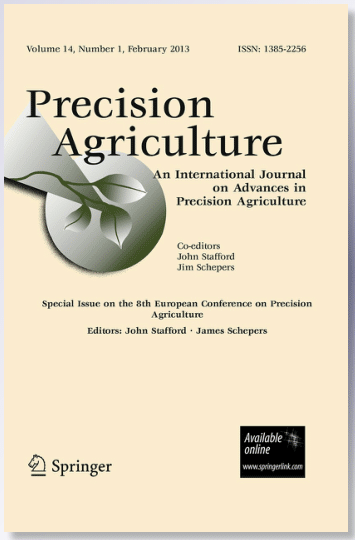Accurate estimation and spatial allocation of economic optimum nitrogen (N) rates (EONR) can support sustainable crop production systems by reducing chemical compounds to be applied to the ground while preserving the optimum yield and profitability Smart Farming (SF) techniques such as historical precision agriculture (PA) machinery data, satellite multispectral imagery, and on-machine nitrogen adjustment sensors can bring together state-of-the-art precision in determining EONR. The novelty of this study is in introducing an efficient optimization framework using SF technology to enable real-time and prescription based EONR application execution. An optimization strategy called response surface modelling (RSM) was implemented to support decision making by fusing multiple sources of information while keeping the underlying computation simple and interpretable. Here, a field of winter wheat with an area of 7 ha was used to prove the proposed concept of determining EONR for each location in the field using auxiliary variables called multispectral indices (MSIs) derived from Sentinel 2. Three different image acquisition dates before the actual N application were considered to find the best time combination of MSIs along with the best MSIs to model yield. The best MSIs were filtered out through three phases of feature selection using analysis of variance (ANOVA), Lasso regression, and model reduction of RSM. For the date 2020.03.25, 14 out of 21 MSIs exhibited a significant interaction with the N applied as determined through an on-machine N sensor. For dates 2020.03.30 and 2020.04.04, the numbers of significant indices were identified as 6 and 10, respectively. Some of the MSIs were no longer significant after five days of the growth period (5-day interval between Sentinel 2 revisits). The best model demonstrated an average prediction error of 14.5%. Utilizing the model’s coefficients, the EONR was computed to be between 43 kg/ha and 75 kg/ha for the target field. By incorporating MSIs into the fitted model for a given N range, it was demonstrated that the shape of the yield-N relation (RSM) varied due to field heterogeneity. The proposed analytical approach integrates farmer engagement by participatory annual post-mortem analysis. Using the determined RSM approach, retrospective assessment compares economically optimal N input, based on observed MSIs values to each location, with the actual applied rates.


